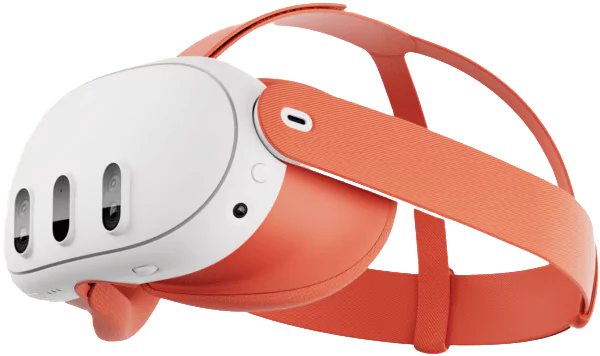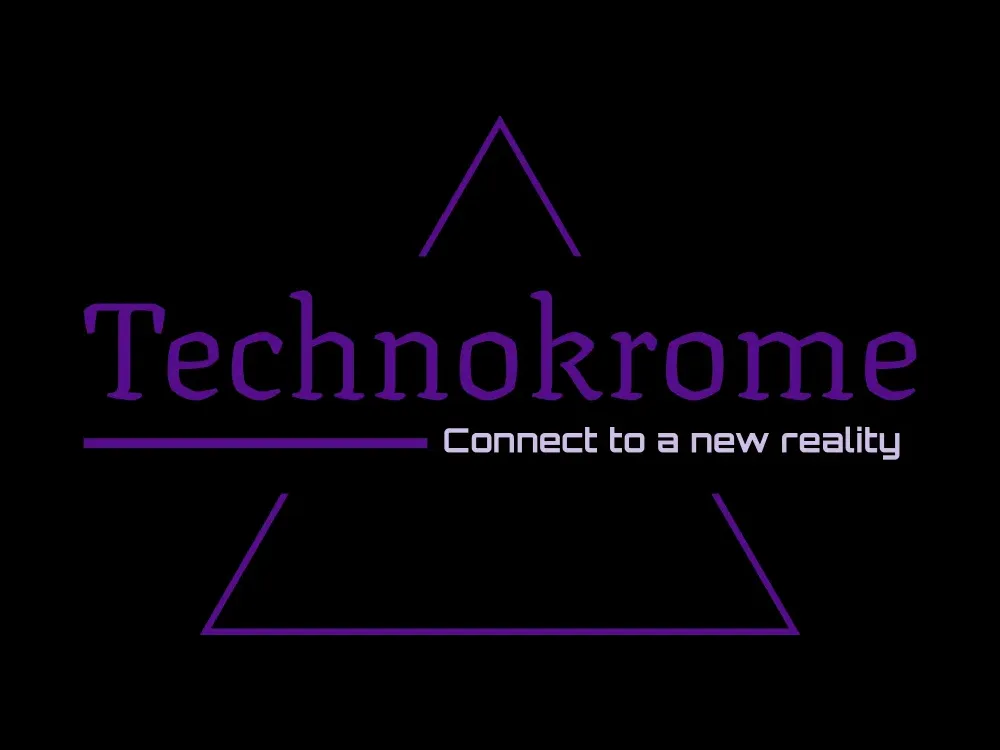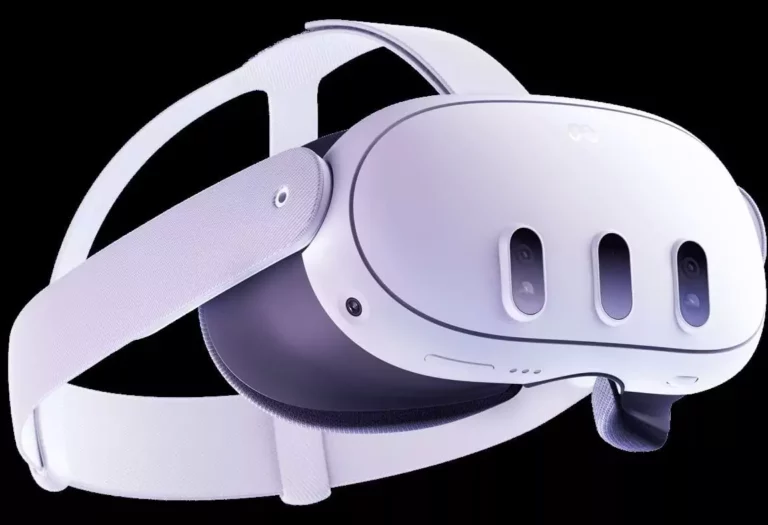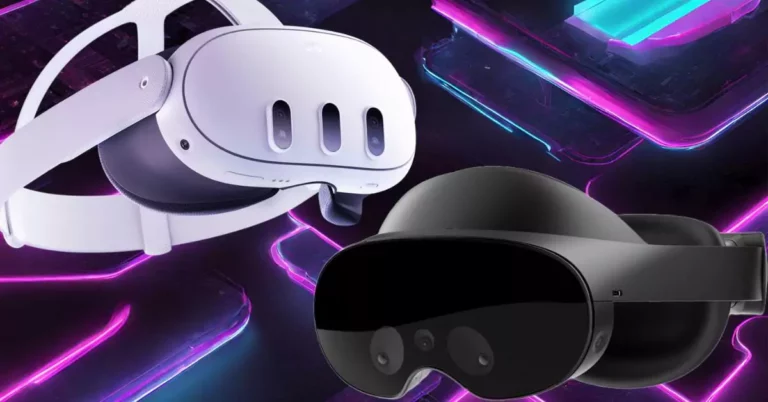Price

The Meta Quest 3 is significantly cheaper than the Meta Quest Pro. This is a major factor for many people when choosing between the two headsets.
With the 128 GB model of the Quest 3 priced at $499.99 along with controllers – it stands at half the price of the Quest Pro which costs about $999 USD, definitely on the pricier side.
The Meta Quest 3’s price point of $499.99 positions it as an attractive option for a wide range of users, including MR/VR enthusiasts and casual gamers.
Meta’s commitment to making VR more accessible to the masses is evident with this affordable price tag, ensuring that more people can experience the wonders of virtual reality.
On the other hand, the Quest Pro, initially priced at a steep $1499.99, was a premium offering for VR professionals and enthusiasts seeking cutting-edge features. However, Meta’s decision to reduce the price to $999.99 has made it a more viable option for a broader audience.
Nevertheless, it remains relatively more expensive than the Quest 3, mainly due to its professional-grade capabilities.
Table of Contents
Compatibility
The Meta Quest 3 is compatible with more devices than the Meta Quest Pro. This means that you can use the Meta Quest 3 with a wider range of computers and smartphones.
The compatibility of VR devices with a wider range of other devices is unequivocally beneficial for several reasons.
This expanded compatibility ensures a more seamless and versatile user experience, fostering integration with existing technology while allowing for innovative applications that transcend the confines of a single platform.
By accommodating a greater number of devices, VR technology becomes more accessible. Users can utilize VR devices alongside their preferred smartphones, computers, or gaming consoles without being tethered to a specific ecosystem.
This compatibility facilitates adoption, breaking down barriers to entry and enabling a broader user base to experience the wonders of virtual reality.
Imagine if a user can effortlessly switch between their VR device and a variety of peripherals, such as motion controllers, specialized input devices, or even smart home systems.
This interoperability enhances the overall value proposition, and improves upon what VR already offers – giving users the power to try out exciting new interactive experiences.
To add to this, compatibility with a diverse range of devices encourages innovation among developers. They can leverage existing technology and create cross-platform applications that cater to a wider audience, thus fostering a competitive landscape that drives the continuous improvement of VR content and functionality.
A greater compatibility of VR devices with various other devices is a catalyst for accessibility, versatility, and innovation, enhancing the overall appeal and impact of virtual reality technology.
Other Stuff To Consider
> Availability of VR Accessories and Enhancements

This is something that can enhance the overall experience of a user. Items like VR covers, additional controllers, custom grips, and specialized VR stands can add comfort and convenience to VR gaming and content consumption.
Some users might also want to explore VR-specific audio solutions like headphones or spatial audio systems for a more immersive sound experience.
> VR as a Social Experience
Some headsets offer built-in social features or integration with social platforms, allowing users to connect with friends and interact in virtual spaces.
VR chat platforms and social VR apps allow users to meet and interact with others from around the world in virtual environments.
It can also facilitate collaboration in various industries, enabling remote teams to work together in virtual meeting rooms and share 3D models and visualizations.
Here are a few virtual apps you can look into for a more enriched social experience with Meta:
- Horizon Workrooms is a virtual workspace where teams can meet, collaborate, and share ideas. It offers features such as whiteboards, video conferencing, and file sharing.
- AltspaceVR is a social VR platform where users can meet new people, attend events, and explore virtual worlds. It offers features such as live chat, voice chat, and multiplayer games.
- Bigscreen is a VR cinema where users can watch movies, TV shows, and YouTube videos together. It also offers a workspace mode where users can collaborate on projects.
- Rec Room is a VR game platform where users can play games, create their own worlds, and hang out with friends. It offers a variety of games, including paintball, laser tag, and dodgeball.
- VRChat is a social VR platform where users can create their own avatars and explore virtual worlds. It offers a variety of worlds, including anime worlds, gaming worlds, and horror worlds.
To Sum Up
The Meta Quest 3 and Meta Quest Pro are both great VR headsets. However, they have different strengths and weaknesses.
❯❯ The Quest 3 is a better choice for people who are looking for a high-quality VR experience at a reasonable price.
❯❯ The Quest Pro is a better choice for people who are looking for the most immersive VR experience possible.
This will be an exciting fall release as Meta introduces the Quest 3, sparking a thrilling decision between it and the Quest Pro.
For those looking for value and exciting upgrades, the Quest 3 is the way to go, appealing to both casual users and hardcore VR fans.
Meanwhile, the Quest Pro stands as the pinnacle of premium features and sleek design, catering to those craving a professional-grade VR journey. The choice is yours, and both options promise an immersive and cutting-edge experience.
Which Headset Is Right For You?

To decide which headset is right for you, consider your needs and budget.
For those seeking a top-tier VR experience without breaking the bank, the Meta Quest 3 emerges as a compelling contender, providing a perfect balance of quality and affordability.
On the flip side, if absolute immersion is your goal, the Meta Quest Pro takes the lead, offering the ultimate in virtual reality indulgence.
The Quest 3, poised as an excellent choice for value-conscious users, and promises an engaging VR journey that won’t strain the budget. Equipped with the latest enhancements, it brings a fresh wave of innovation, ensuring that both casual users and enthusiastic VR fans can delight in a wide range of experiences.
Imagine exploring breathtaking virtual landscapes, engaging in thrilling adventures, or even connecting with friends in immersive social environments. The Quest 3 lets you enjoy all this and more without compromise, allowing you to dive into the world of virtual reality without sacrificing quality.
On the other hand, the Meta Quest Pro caters to those who demand the utmost from their VR encounters. With premium features meticulously designed to push the boundaries of what’s possible, it provides an unparalleled level of immersion.
From crystal-clear visuals to the most seamless interactions, the Quest Pro is a choice that’s synonymous with a high-end VR experience.
Picture yourself in the midst of cutting-edge games, experiencing every detail in stunning clarity, and effortlessly interacting with your virtual surroundings. The Quest Pro’s professional-grade capabilities ensure that you’re not just an observer – but that you’re an active participant in an incredibly lifelike digital realm.
Basically the choice between the both depends on your priorities. If you’re seeking affordability and a fantastic overall experience, the Quest 3 is your go-to.
If you crave the pinnacle of immersion and are willing to invest in the finest VR has to offer, the Quest Pro is the perfect match. The decision is yours, and with either option, you’re in for a virtual treat.
What To Expect From Future Models
As VR technology continues to evolve, we can anticipate exciting advancements in various areas.
Improvements in haptic feedback technology, advancements in eye-tracking for more realistic interactions, and even better integration of augmented reality (AR) features within VR headsets are possibilities for the future.
Moreover, advancements in wireless transmission and the miniaturization of components may lead to even more compact and lightweight VR headsets with longer battery life.
As the VR ecosystem grows, users can look forward to an expanding array of content, accessories, and technologies that will continue to redefine how we interact with virtual worlds.
Quest 3 VS Quest Pro | Comparison Overview

Feature
Meta Quest 3
Meta Quest Pro
Display Resolution
2,064 x 2,208 per eye
1800 x 1920 per eye
Field of View (Horizontal)
104 degrees
106 degrees
Refresh Rate
90 Hz / 120 Hz (experimental)
90 HZ
Weight
515g
722g
Price
Starting from $500
Starting from $1000
Performance
Similar
Display
Similar
Comfort
Slightly Better
Slightly Worse
Features
Absence of Eye-Tracking & Face-Tracking
Decent
Software Ecosystem
Larger
Smaller
Compatibility
More Devices
Less Devices





